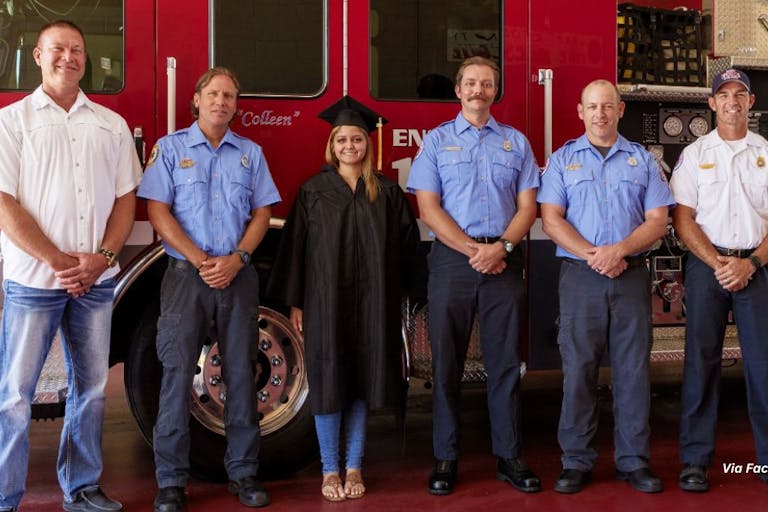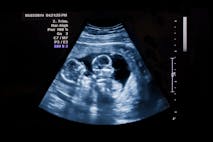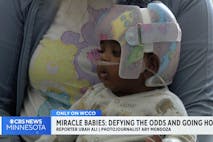
Firefighters celebrate birthday of Safe Haven baby left at fire station… 18 years ago!
Nancy Flanders
·
Baby safe haven law critics put ideology over facts
In the debate around Mississippi’s Gestational Age Act, Supreme Court Justice Amy Coney Barrett addressed pro-abortion arguments dedicated to “forced motherhood,” pointing out that safe haven laws exist in all 50 states and serve as a last-ditch effort when all other resources are over.
In the wake of Justice Barrett’s comments, some abortion activists have sought to cast doubt on the efficacy of, and even the need for, safe haven laws. But these criticisms fail to acknowledge what safe haven laws actually are for, and what they do.
“It’s flawed from the get-go,” Adam Pertman, president and CEO of The National Center on Adoption and Permanency said to the Associated Press, claiming that “because a woman who would put her kid in a trash can is not instead going to see a sign and say ‘Oh I’ll go to the police station instead.’” Such a woman, he claimed, is “not cogent enough to make a decision, or she wouldn’t put her kid in the trash can.”
Other critics claim the safe haven laws don’t go far enough to help the women in crisis pregnancies. Still others raise concerns about not knowing the familial medical history of infants surrendered under safe haven laws – babies who usually are adopted right away, spending little time in foster care. “We didn’t really know what we were walking into. It’s just one of those things where it’s a total leap of faith,” said one parent interviewed by the AP.
All of these criticisms, however, miss the larger picture. According to the National Safe Haven Alliance 2020 report, 4,127 babies have been saved since 1999 when the state of Texas established the first safe haven law, with 120 of those babies (3%) saved in 2020 alone. By 2008, all 50 states had adopted safe haven laws. Contrary to the claims of Pertman, data from the CDC shows that babies killed on their first day of life dropped 67%.
Article continues below
Dear Reader,
In 2026, Live Action is heading straight where the battle is fiercest: college campuses.
We have a bold initiative to establish 100 Live Action campus chapters within the next year, and your partnership will make it a success!
Your support today will help train and equip young leaders, bring Live Action’s educational content into academic environments, host on-campus events and debates, and empower students to challenge the pro-abortion status quo with truth and compassion.
Invest in pro-life grassroots outreach and cultural formation with your TRIPLED year-end gift!
The claim that safe haven activists do not contribute to the needs of women experiencing crisis pregnancies is unfounded. In 2020, the National Safe Haven Alliance (NSHA) created the Baby Sprinkle Project which, according to the report, “provides direct support for parents that need help getting on their feet, whether they choose to parent, place their child for adoption, or relinquish their baby using the Safe Haven law.” The organization runs a crisis hotline, and has several programs to help women and families in crisis situations. Its core mission is to help save the babies who might otherwise be killed, giving women an escape hatch and keeping their babies alive.
READ: Recent infant murders show that state Safe Haven Laws need more publicity
And while it is true that parents adopting an infant under safe haven laws face many unknowns about the baby’s background, this is not a valid argument against safe haven laws. Parents who adopt these babies understand that adopting a safe haven baby, even with all the unknowns and differences from a traditional adoption process, still saves a human life and gives a child a home. Safe haven laws must be seen as what they are: a last-ditch effort for a woman who feels she is out of options, and one that saves the life of a vulnerable infant.
All in all, data shows that safe haven laws are an important option for women and newborns. Critics of safe haven laws in the wake of Justice Barrett’s comments have shown themselves to be willing to ignore the facts and also ready to abandon their commitment to women’s “choices” – in what appears to be little more than a critical reaction to a Supreme Court justice with pro-life sympathies, whom they oppose.
“Like” Live Action News on Facebook for more pro-life news and commentary!
Live Action News is pro-life news and commentary from a pro-life perspective.
Contact editor@liveaction.org for questions, corrections, or if you are seeking permission to reprint any Live Action News content.
Guest Articles: To submit a guest article to Live Action News, email editor@liveaction.org with an attached Word document of 800-1000 words. Please also attach any photos relevant to your submission if applicable. If your submission is accepted for publication, you will be notified within three weeks. Guest articles are not compensated (see our Open License Agreement). Thank you for your interest in Live Action News!

Nancy Flanders
·
Analysis
Cassy Cooke
·
Analysis
Cassy Cooke
·
Analysis
Bridget Sielicki
·
Analysis
Cassy Cooke
·
Analysis
Cassy Cooke
·
Human Interest
Laura Nicole
·
Human Interest
Laura Nicole
·
Newsbreak
Laura Nicole
·
Human Interest
Laura Nicole
·
Human Interest
Laura Nicole
·